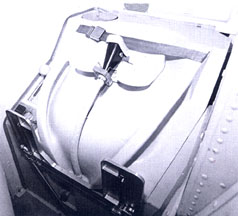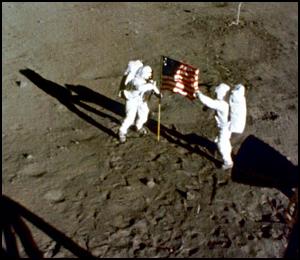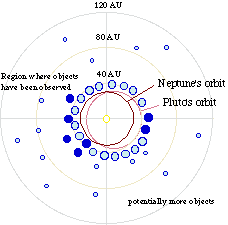Quickie Questions - Phascinating Physics - Space-Time/Relativity
| Date Answered | Questioner (age, location) | Question | Answer |
|---|---|---|---|
| September 30, 2009 | Bryan (age 28, canada) | Eye sight is the light refecting off an object into our eyes. Iam looking at a clock and clock read 12:00pm. I move away from that clock at the speed of light (assuming I can still read it) Would the clocks time change? |
No, the time in the clock, for you, when moving at the speed of light, would stay the same. |
| September 25, 2009 | Sehrish (age 18, Pakistan) | How special theory of relativity explains time dilation | Time dilation happens and the very high speed (near lightspeed) for which the theory was developed. In a simple way it can be expressed as clocks that are moving with respect to an inertial system of observation are measured to be running slower. The mathematical expression to calculate this effect is known as Lorentz transformation. |
| September 16, 2009 | jessica (age 18, nd) | If the speed of light were smaller than it is, would relativistic phenomena be more or less conspicuous than they are now? | Interesting question. Let's see, I would think that they will be more conspicuous, but this could be subjective since our observational methods depend on the speed of light! |
| August 20, 2009 | sam (age 6, ) | does time slow down when there is a strong gravitational pull? | Yes, theoreticaly this is what is expected to happen once the "event horizon" of a black hole is reached. |
| August 20, 2009 | Tyler (age 23, California) | Does change in motion affect the mass of an object? | This is no the case for motions at speeds much lower than the speed of light. But near this value (roughly 300 000 m/s), mass is not constant anymore, it becomes a relativistic magnitude. |
| May 7, 2009 | deepak (age 18, india) | if speed of light is not constant then what effect on theory of reletivity | The Theory of Relativity is based on two main assumptions: 1. The speed of light in a vacuum is constant (Principle of Invariant Light Speed), and 2. The physical laws governing motions are not affected, whether these changes of state be referred to the one or the other of two systems in uniform translatory motion relative to each other (Principle of Relativity). If any of these two Principles is shown to be false, the Theory of Relativity would not be valid. |
| April 17, 2009 | akshata (age 14, maharashtra,india) | exactly,what is the wormhole theory? is it which connects two universes together and if yes then theoritically is it that there is existence of other universe if yes then is through time travel? pls answer this question. |
This is a very complex issue. A wormhole is any structure connecting two regions or areas otherwise distant or unrelated. They have long been discussed as a possible mode of interstellar travel and even of time travel. This page offers a nice explanation of the theory around wormholes. |
| October 7, 2008 | andrea (age 42, Canada) | Why do people age more slowly in outer space (or even slightly if they live high above sea level like on a mountaintop)? | This is one of the results of the Theory of Relativity. As we approach the speed of light, there a tangible effect of time dilatation (as expressed by the Lorentz Transformation). As a result, time flows "slowly". |
| June 23, 2008 | gary (age , ) | Just a "light" attempt to answer your question. Because c is an universal constant, the parameters calculated using it (time, distance, etc) have already considered the relativistic effects. A super-nova exploding NOW at 1 billion light-years, will be observed here in 1 billion years from now. | |
| January 21, 2008 | Ian (age 17, ON) | On this website it said that black holes will bend space time, well what does that mean? I can't even visualize that on a 3D scale. If you were to draw that what would it look like if say light were entering the black hole? | According to Albert Einstein's theory of General Relativity spacetime can be visualized as a rubber sheet which gets deformed by any object which has mass or energy. This deformation is called curvature of spacetime. This page offers more infomation and some interesting figures. |
| July 11, 2007 | v (age 13, india) | what is in worm hole? | In physics, a wormhole is a hypothetical topological feature of spacetime that is essentially a 'shortcut' through space and time. |
| March 7, 2007 | Veena (age 13, India) | What is wormhole? | A wormhole is a hypothetical feature of space-time that is essentially a 'shortcut' through space and time. Under the current level of knowledge, they are mostly speculation and theoretical physics (although very used in sci-fi movies!). |
| November 20, 2000 | Karen (age 46, Florida, USA) | What is so special about the date November 19,1999? | We also write this date as 11-19-1999. All of the digits are odd. The next Odd day will be 1-1-3111, which is well over a thousand years away. Days such as 4-13-89 have both even and odd digits, thus, it is neither an Odd nor Even day . There was an Even day on 2-2-2000 - the first one since 8-28-888! |
| May 11, 1999 | Craig (age 38, England) | As the universe is expanding, what is happening to time? Is this also 'growing'. Does that mean that Time travel to the past is impossible purely because 1 sec of 'new time' would not fit into 1 sec of 'old time'? This may ge a stupid question but it's stuff like that, that keeps me awake at nights! | Now you have me up all night trying to find the answer! (just kidding) I guess you can say that time is growing while the Universe is expanding. If you think about it, every second that goes by adds a little more to history. However, I don't think we should just assume this makes time travel impossible. The idea behind time travel is not to "go faster" than time, but to somehow skip over a section. This is the real challenge! |
| May 10, 1999 | Billy (age 56, Texas,USA) | What does red shift mean? | When you are observing an object in space that is moving away from you, the light you see is stretched out. This means light is shifted towards the red end of the spectrum. This is called a red shift. If the o bject is moving towards you, the light is shifted towards the blue end and is called a blue shift. |
| April 26, 1999 | J (age 9, Missouri, USA) | What are worm holes? | This is a good page to learn about worm holes. |
| March 29, 1999 | Emily (age 21, Texas, USA) | Why is the rule of parsimony referred to as 'Ockham's Razor'? | The "Law of Parsimony", or "Law of Economy", is a principle stated by William of Ockham. It says that if two theories explain the facts equally well, then the simpler one is the better one. Ockham used this principle so often and so sharply tha t it became known as 'Ockham's Razor'. |
| March 29, 1999 | Anna | What is the theory of Einstein's Relativity? | Einstein's Theory of Relativity made predictions about the link between gravity, space and time. Here is a site which can give you the ba sics. |
| March 17, 1999 | Jamie (age 39, Ontario, Canada) | It is said that we live in a three dimensional world. What are the three dimensions and can you give an example fo each. | We humans actually exist in four dimensions. Three spacial dimensions, which are left-right, forward-backward, and up-down, and one more dimension, time. A point would be one dimensional, a line two dimensional, and a cube three dimensional. The universe is theorized to have about 10 dimensions. |
| January 21, 1999 | Jeff (age 13, USA) | What is spacetime? | According to the theory of relativity, space and time are not separate things but instead different parts of a four-dimensional continuum. The space-time continuum is the theory that space and time are interconnected. Space is three-dimensional, and time is one-dimensional, so together they make up the four-dimensional space-time. Space-time is a continuum because, as far as we know, there are no missing points in space or moments in time. It's hard to picture a four-dimensional continuum since our universe is three dimensional, but you can still know how it works. Think of it as a three-dimensional coordinate system (x,y,z), with one more coordinate for time. |
| February 19, 1998 | Chris (age 8, California, USA) Kathy and Tony (England) |
What is the space-time continuum? Can you explain it? | The space-time continuum is the theory that space and time are interconnected. Space is three-dimensional, and time is one-dimensional, so together they make up the four-dimensional space-time. Space-time is a continuum because, as far as we know, t
here are no missing points in space or moments in time. Explaining how spacetime works is extremely long and complicated. An excellent book to read, full of examples and illustrations, is Lewis Carroll Epstein's Relativity Visualized. |
| February 13, 1998 | Surjeet (age 15, Michigan, USA) |
Is teleportation possible? | Teleportation is the act of making one object disintegrate and a perfect replica appear in another place. Until recently, teleportation was considered to be impossible. However, s ome scientists have come up with a theory showing how to do it, and others are planning experiments to demonstrate teleportation. However, these experiments involve nothing bigger than single atoms. In terms of teleporting people or large objects, altho ugh theoretically possible, it will be a very long time before we see it happen. |
| February 11, 1998 | Geetha (age 15, Bahrain) | What does Einstein's Theory of Relativity state? | Who better to describe this than Stephen Hawking! From his book Black Holes and Baby Universes, Hawking writes that the special theory of relativity, "describes how objects move through space and time. It shows that time is not a universal q uantity which exists on its own, separate from space. Rather, future and past are just directions, like up and down, left and right, forward and back, in something called space-time. You can only go in the future direction in time, but you can go at a b it of an angle to it. That is why time can pass at different rates." Hawkings goes on to say that the general theory of relativity explains that, "gravity was not just a force that operated in a fixed background of space-time. Instead, gravity was a di stortion of space-time, caused by the mass and energy in it. Objects like cannonballs and planets try to move on a straight line through space-time, but because space-time is curved, warped, rather than flat, their paths appear to be bent." |
| January 21, 1998 | John (age 16, Arizona, USA) | Has any scientist or cosmologist ever theorized about the existence of any other dimensions? Where can I read more about this? | There has been speculation that there are more dimensions that we normally think of...most scientists will tell you there are 4 dimensions (east-west,north-south,up-down,time). But lately, there have been some physicists who have said there must be more dimensions than that. Take a look at this web page for a full explanation: dimensions |













